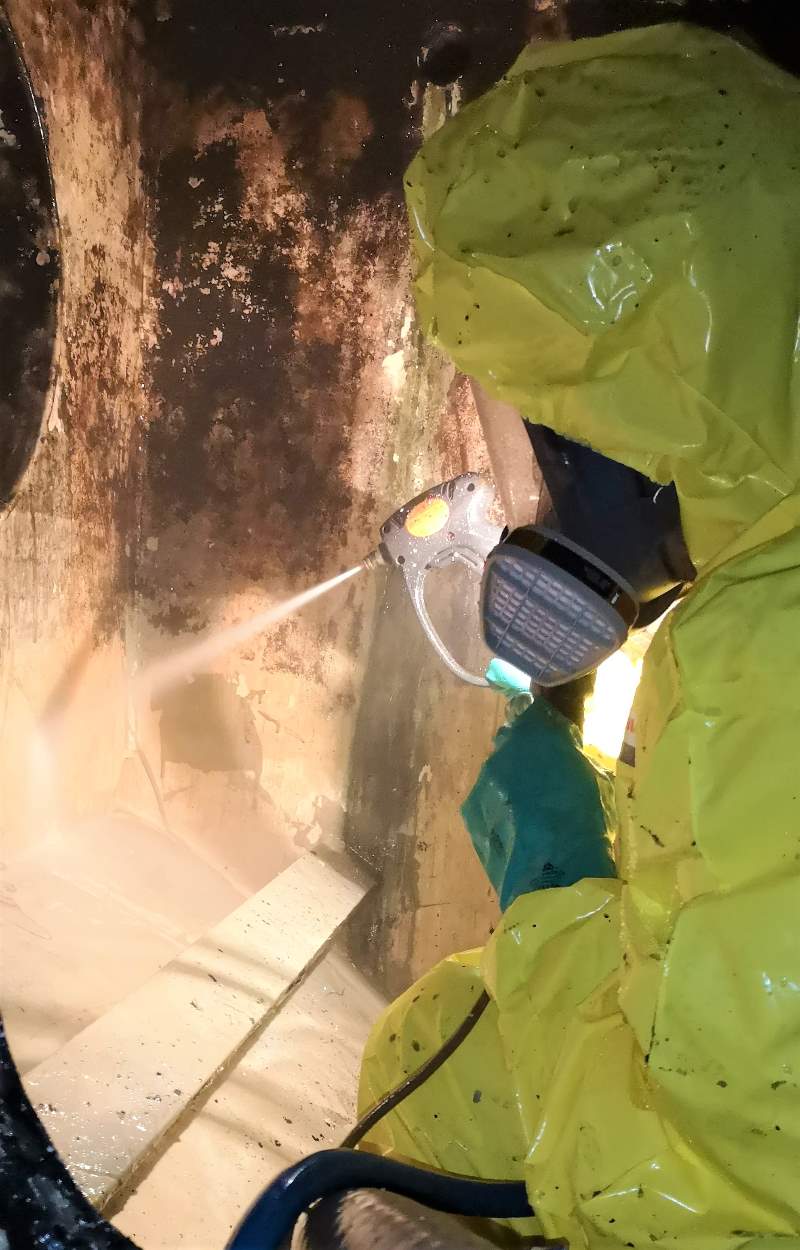Cleaning : Black tanks and grey water tanks.
So as to ensure their proper functioning, Black tanks and Grey water tanks need regular maintenance.

Cleaning a waste water tank
Black tanks :
They contain the waters coming from the toilets. Over time, an accumulation of sediment, sludge, and organic materials
appear at the bottom of the tank.
Appear at the bottom of the tank.
They contain the waters coming from the bathrooms and kitchens. Over time, an accumulation of
grease appears in the tank, along with organic debris, hair, etc.
These deposits can cause bad smells on the ship, the obstruction of the waste line, the clogging of level gauges.
A regular cleaning therefore allows to avoid these problems and to check the condition of the structure of the tank. (corrosion).
The cleaning of tanks on ships requires a high level of training and skills..
That’s why our technicians are properly trained and apply a cleaning procedure as well as strict safety protocols..
Our procedure is based on a high pressure cleaning (rotary nozzles) with a deodorising product..
We use high-tech equipment, in compliance with the regulation, gas detector H2S (gas free test), ATEX gear (explosive environment),
breathing devices, dry suits, 24V lamps, etc.
The waste from cleaning is collected and transported to an authorised water treatment plant.
A waste tracking slip (BSD / WTS) is issued so as to ensure its traceability.














